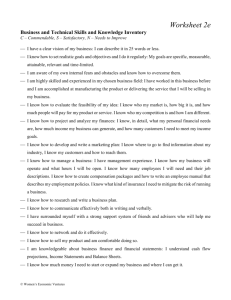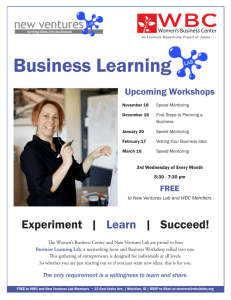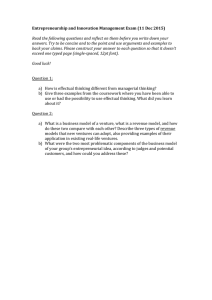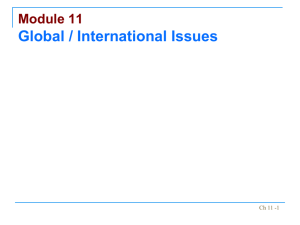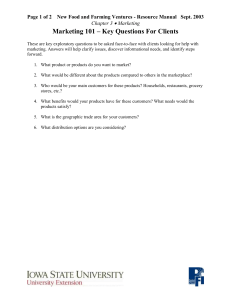Innovation Mechanism of Silicon Valley Cluster 30 March 2006
advertisement
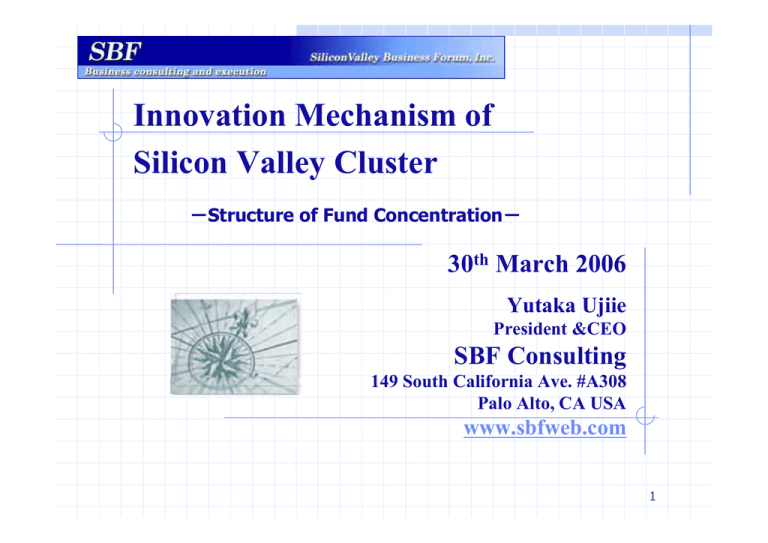
Innovation Mechanism of Silicon Valley Cluster -Structure of Fund Concentration- 30th March 2006 Yutaka Ujiie President &CEO SBF Consulting 149 South California Ave. #A308 Palo Alto, CA USA www.sbfweb.com 1 Agenda A. As a result of VC money investment… B. Position of established companies and CVC C. Structure of fund inflow into the cluster D. Suggestion (This file is SBF Consulting contents which became a basis of a series of research of Kyoto University on industrial clusters commissioned by RIETI.) 2 Key Words Established Companies (Establishes) VS Ventures Supplementary Position in Product Development Phase Structural Inflow Mechanism of Fund into the Cluster 1-History of Silicon Valley Cluster Formation 3 Definition of the Stages(US National VC Association) 1.Seeds/Start-ups Primary stage soon after the foundation when business concepts and products are developing. Usually within 18 months after the foundation 2.Early Stage Prototype or service contents in testing phase is ready. Sometimes they are ready to sell products. Usually within 3 years after the foundation 3.Expansion Stage(Middle Stage) Products or services are completely ready to sell. Usually more than three years after the foundation 4.Later Stage Products or services are ready to be expanded. The sales and cash flow increase. Spin-out could happen at this stage. 4 MOT Phase & Fund-raising 18 months Seed / Start-up 18 months Early Stage 18 months Expansion Seed money / Series A Series B Series C 18 months ~ Later Stage/ Mezzanine Series D Development -Ⅰ Development -Ⅱ Commercializa Industrialization tion Concept / prototype Finished products Start sales Mass-product, Expansion of sales 5 A. Function of VCs A-1. Business Position Responsibility for better investment operation High performance to make sure next funding and grow Assuring VC revenue model: (Exit)・・・IPO, M&A Investment into firms which agree with selling firms in the future at the initiative of VCs A-2. As a result of VC investment…. Human uniting between Establishes and Ventures Push Ventures more upstream in R&D phase 2- VC Investment and Market Data 3- MOT Stages and Money Raising 6 B.Position of Established Companies & CVCs B-1. General Investment Purpose of CVCs Advance to new markets Add new products to existing distribution channel Reduce the cost of R&D Verify the usefulness of new technology Increase profits by synergy effect Fund supply for spin off from parent company Blow entrepreneur spirit into firms Utilize remaining productive room, time, human resources 7 B-2. Top CVC-Intel Capital Aim of foundation:Bring in efficiently what is missing 1. Basic technology 2. Product co-development 3. Strengthen biz alliance with ventures Investment target: 1. Data communication system, component 2. Optical / 3. Wireless, mobile access / Cell phones, devices 4. Security software / 5. Servers, Storage, etc. Investment process: (1) Analysis of markets:Analyze the markets, customer needs, competitive firms (2) Evaluation of technology:Synergy effects with related technology including portfolio firms (in addition to their reputation in the industry) Check the possibility of competitiveness 8 B-3. R&D Phase of Partners Research & Development Phase of venture partners for Established American and Japanese companies 1.American firms →Prototype, finished products development phase / Starting sales phase (OEM procurement) 2.Japanese firms’ SV Bases R&D Lab→ Prototype, finished products development phase mainly 4-Comparison of R&D Phase- Case Studies 9 C. Structure of Fund Inflow into the Cluster Comparison: Activity Areas of Players Universities and its ventures Development Ventures of SV VCs, Corporate VCs Establishes Money Inflow: Innovation Mechanism of Silicon Valley Cluster From Establishes focusing on Application / products development and Commercializing phase, to SV Style Ventures focusing on fundamental and multi-purpose technology / products development 5-Position Map 10 D. Suggestion D-1. Relationship between them Harmoniously uniting between Ventures and Establishes Ventures・・・ Possibility to sell off the firm in the future as the secondbest policy Establishes・・・ It is efficient to acquire Ventures in order to introduce the latest technologies and solutions, adopt potential seeds. They prefers cooperative products development rather than rapid investment. 11 D-2. Single biz seed model Usual type in Japan which doesn’t have biz seeds rather than current one, partly being popular in SV too Fund-raising not depending too much on VCs, but on licensing and on selling their products Try to develop business at their own pace. No “selling off pressure” from VCs IPO in the future = the only target 12 D-3. Several Seeds Model Several biz seeds exists for one person at the same time in universities, Establishes lab. and other R&D institutes Capable people can work creatively also apart from currently dedicated technology and biz models Rather positive about selling off the current firm. It results commercialize and succeed to Establishes as much biz seeds as possible It matches VC business position and makes funds inflow much easier 13 D-4. Suggestion Point is to grow thickly the development phase (focusing on fundamental and multi-purpose technology / products) Ventures to meet with the needs of product development in Establishes To complete it … • Promote the uniting in human resources between Establishes and Ventures • Expand VC money, also Finding out the capitalists • Foundation or ‘soil’ for such harmonious uniting 14
